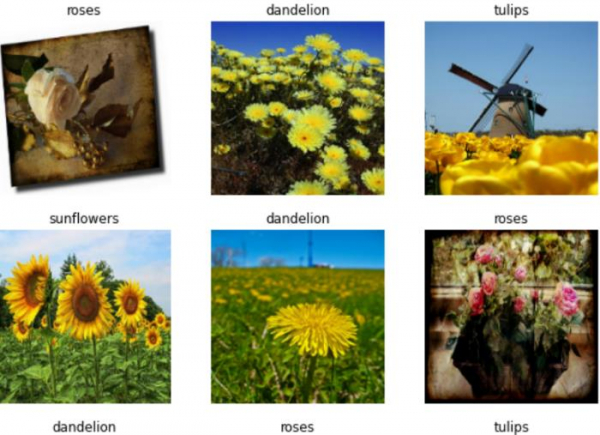
 Data Structure
Data Structure Networking
Networking RDBMS
RDBMS Operating System
Operating System Java
Java MS Excel
MS Excel iOS
iOS HTML
HTML CSS
CSS Android
Android Python
Python C Programming
C Programming C++
C++ C#
C# MongoDB
MongoDB MySQL
MySQL Javascript
Javascript PHP
PHP
- Selected Reading
- UPSC IAS Exams Notes
- Developer's Best Practices
- Questions and Answers
- Effective Resume Writing
- HR Interview Questions
- Computer Glossary
- Who is Who
How can Tensorflow be used with flower dataset to continue training the model?
To continue training the model on the flower dataset, the ‘fit’ method is used. To this method, the number of epochs (number of times the data is trained to build the model) is also specified. Some of the sample images are also displayed on the console.
Read More: What is TensorFlow and how Keras work with TensorFlow to create Neural Networks?
We will be using the flowers dataset, which contains images of several thousands of flowers. It contains 5 sub-directories, and there is one sub-directory for every class.
We are using the Google Colaboratory to run the below code. Google Colab or Colaboratory helps run Python code over the browser and requires zero configuration and free access to GPUs (Graphical Processing Units). Colaboratory has been built on top of Jupyter Notebook.
print("The data is fit to the model")
model.fit(
train_ds,
validation_data=val_ds,
epochs=3
)
Code credit: https://www.tensorflow.org/tutorials/load_data/images
Output
The data is fit to the model Epoch 1/3 92/92 [==============================] - 102s 1s/step - loss: 0.7615 - accuracy: 0.7146 - val_loss: 0.7673 - val_accuracy: 0.7180 Epoch 2/3 92/92 [==============================] - 95s 1s/step - loss: 0.5864 - accuracy: 0.7786 - val_loss: 0.6814 - val_accuracy: 0.7629 Epoch 3/3 92/92 [==============================] - 95s 1s/step - loss: 0.4180 - accuracy: 0.8478 - val_loss: 0.7040 - val_accuracy: 0.7575 <tensorflow.python.keras.callbacks.History at 0x7fda872ea940>


Explanation
- A dataset similar to this (which was built using keras.preprocessing) has been built using the tf.data.Dataset.
- The model can be trained along.
- A few epochs are trained so that it doesn't consume too much time.

